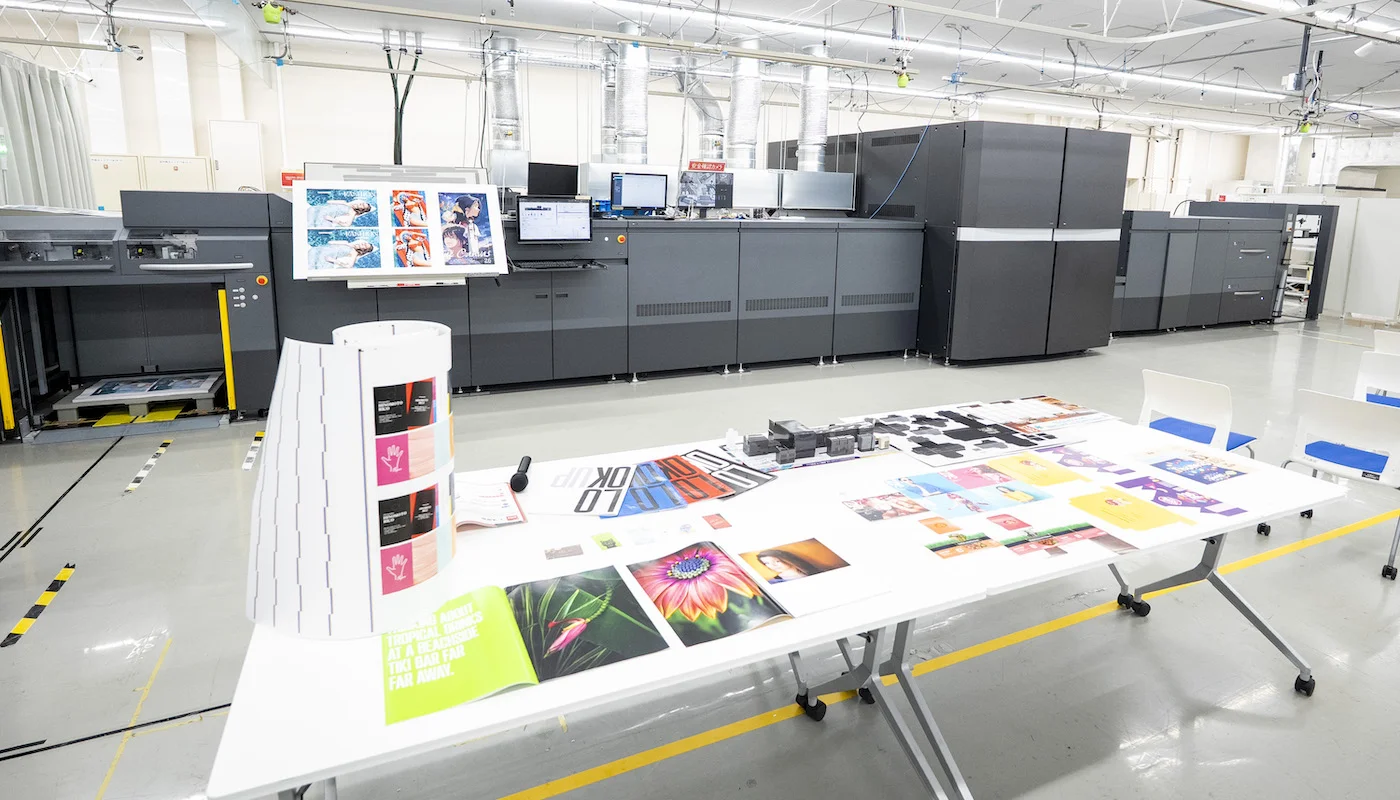On September 1st, Ricoh Graphic Communications (RGC) Business Unit, Ricoh Company, Ltd., held a “Commercial and Industrial Printing Business Briefing” at the Ricoh Technology Center in Ebina, Kanagawa Prefecture. Journalists from Japanese media were invited to learn about the current state and future growth strategies of Ricoh’s commercial and industrial printing operations. Following a presentation by Business Unit President Koji Miyao, attendees toured the Ricoh Customer Experience Center (CEC) and the Technical Surprise Wonderland (TSW) within the facility to gain insight into Ricoh’s initiatives.
Expanding business globally
Koji Miyao, President, Ricoh Graphic Communications & Senior Corporate Officer, Ricoh
The briefing began by Koji Miyao explaining that the RGC business is a key driver of growth and a major pillar of revenue for the Ricoh Group. In fiscal year 2024, Ricoh Group’s consolidated sales reached ¥2527.8 billion, with RGC contributing approximately ¥300 billion—over 90% of which came from markets outside of Japan. With two areas of business, commercial printing and industrial printing, RGC covers a wide range of applications, from traditional paper-based products like catalogs, posters, and flyers to non-paper materials such as building materials, exterior walls, signage, and textiles.
In FY2024, RGC achieved a year-on-year sales increase of 11.6%, with operating profit reaching ¥23.1 billion. As a core revenue source, it supports the group’s growth through stable recurring revenue from consumables and maintenance services. Ricoh’s long-standing expertise in imaging, optics, and systems technology, combined with its global sales and service infrastructure, provide a competitive edge and support sustainable growth.
Providing products and solutions for diverse digital printing needs
In the commercial printing industry, Ricoh offers a wide range of production printers—from toner-based systems to high-speed inkjet models—meeting the varied needs of printing businesses and enterprise markets. Ricoh also provides digital services such as workflow optimization and color management, helping improve efficiency and quality across the entire printing process.
In the industrial printing industry, Ricoh delivers products for diverse applications including textiles and signage, centered on its highly durable and reliable inkjet heads. These products are well-regarded in markets that demand high-mix, low-volume production.
According to independent calculations by Ricoh based on 2024 IDC and Data Supply figures, Ricoh’s flagship products, the RICOH Pro C9000 series and RICOH Pro C7000 series, hold the top market share globally. Furthermore, Ricoh ranks second in market share for continuous feed inkjet printers and inkjet heads for the sign and graphics market.
Ricoh’s strength lies in its vertically integrated development capabilities —from inkjet heads and ink to toner and imaging technology— allowing it to innovate across the entire value chain.

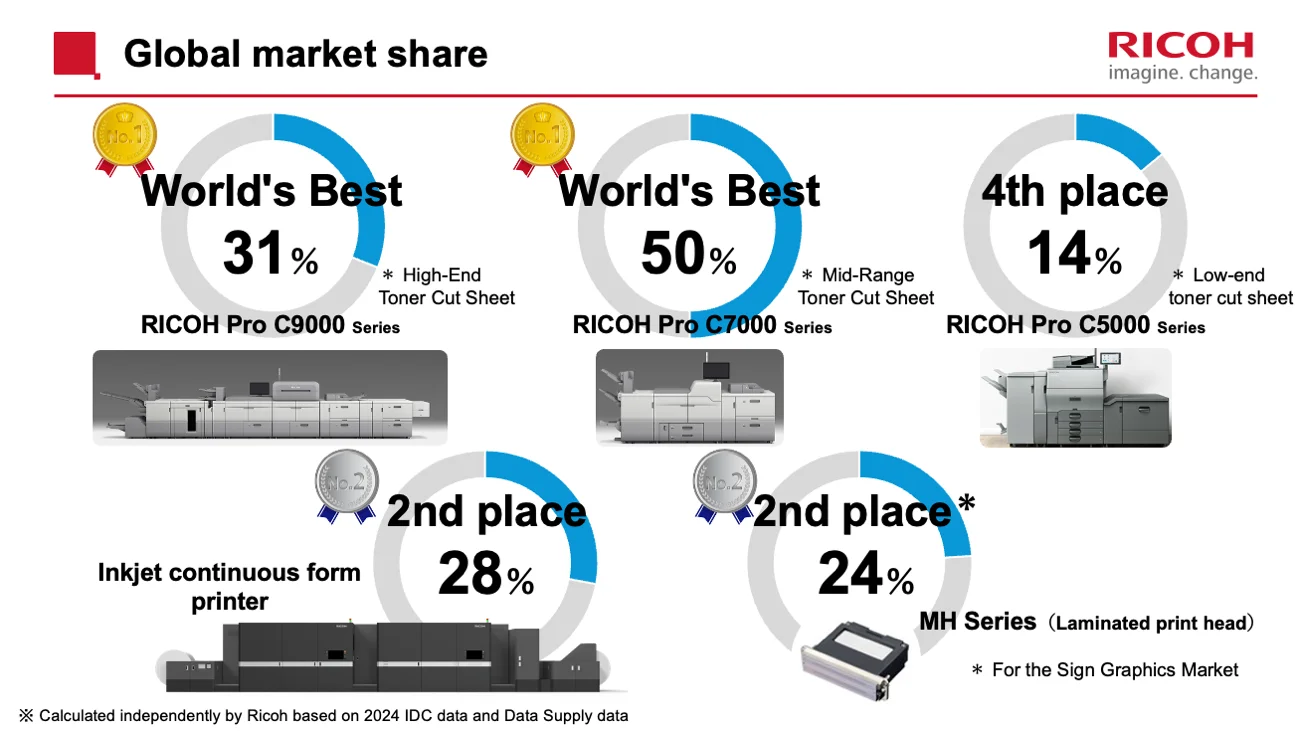
Market environment and growth opportunities: expanding demand and value in digital printing
According to independent research, the global demand for printed materials is estimated at approximately 16 trillion A4 pages and is declining at an annual rate of 1.9%. This trend is largely driven by digitalization and the shift toward paperless. However, digital printing continues to grow in contrast.
In particular, digital color printing is expected to grow at an average annual rate of around 12% through 2030, fueled by increasing demand for personalized and high-value-added printing. For example, direct mail —once printed in tens of thousands of identical copies— is now being customized based on individual consumer preferences and purchasing behavior, enhancing its value and driving demand.
Koji Miyao commented, “Digital printing, which enhances the value of each individual sheet, holds significant growth potential.”
Ricoh’s partner Heidelberg predicts that while analog printing will still account for 90% of total print volume in 2027, digital printing will match analog in terms of market size (based on revenue).
Industrial printing market: steady expansion and high growth in digital
The industrial printing market continues to grow steadily, with total print demand expected to reach approximately 12.5 trillion A4 pages by 2025, increasing at an annual rate of about 2.1%. Within this market, digital printing is projected to grow at a remarkable average annual rate of 21% from 2022 to 2026, driven by trends such as product diversification, small-lot production, and environmental considerations.
Since 2008, Ricoh has commercialized industrial inkjet heads and supported a wide range of applications including signage graphics, 3D printing, textiles, labels and packaging, and decorative printing. These applications continue to expand, and Ricoh is actively developing products to meet diverse customer needs.
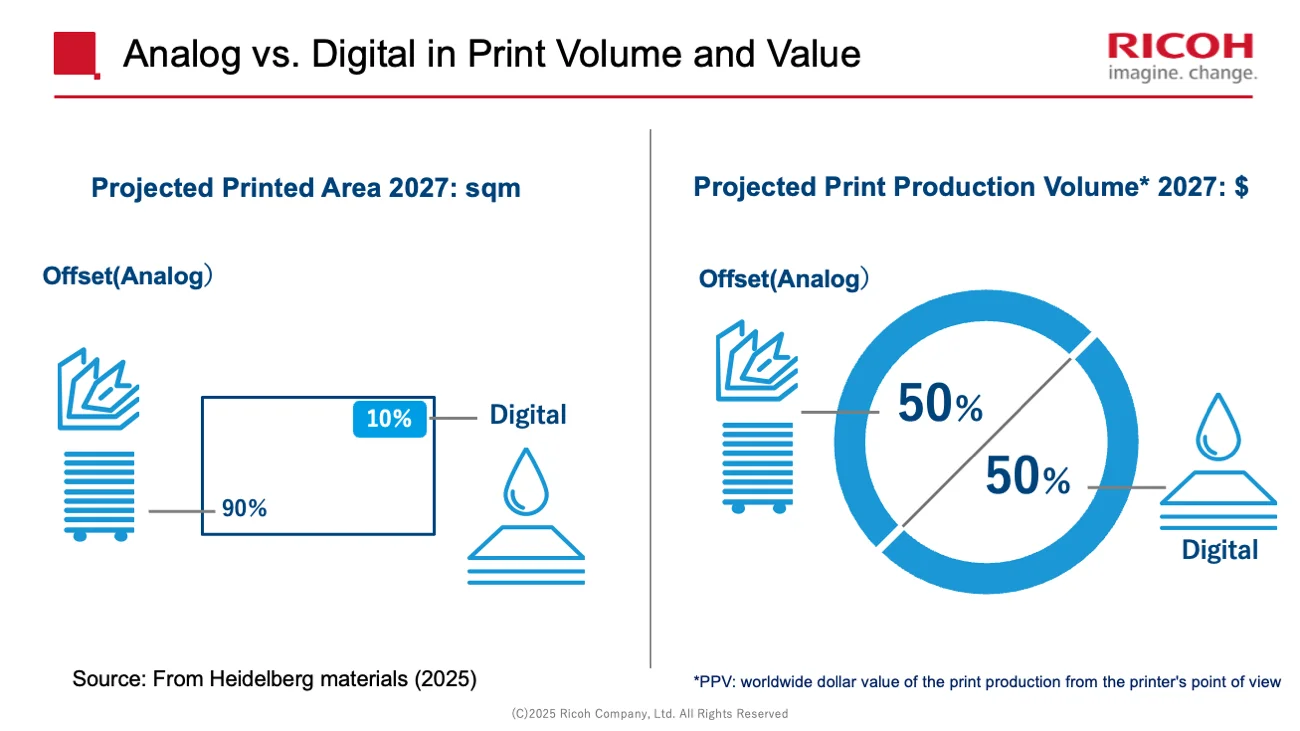
Growth strategy: high-speed inkjet and new market expansion
The printing industry faces numerous challenges, including the need to respond to diverse demands, labor shortages, and environmental concerns. Digital printing offers advantages such as on-demand production, profitability visualization, automation, and resource efficiency, making it a foundational technology for industry transformation.
Commercial printing: Expanding into medium and large volume segments with high-speed inkjet
Ricoh is leveraging high-speed inkjet technology to expand its commercial printing business from small-lot production into medium and large-volume segments. Technological advancements have significantly improved productivity, image quality, stability, and cost-efficiency, making digital printing a viable alternative even in areas traditionally dominated by offset printing.
Koji Miyao stated, “Ricoh’s strength in commercial printing lies first and foremost in its technological and product capabilities.” Ricoh develops everything in-house—from inkjet heads and ink to toner and imaging engines—and offers a broad product lineup. The company also promotes “Co-innovation”, a collaborative approach to creating value with customers, and supports automation and digital transformation (DX) to enhance operational efficiency and accelerate the industry’s digital shift.

Industrial printing: Expanding into new markets from core strengths
Ricoh is leveraging its strengths in signage graphics and 3D printing to expand into high-growth markets such as textiles and labels and packaging. As applications diversify, Ricoh is also advancing the development of new solutions tailored to emerging needs.
Koji Miyao stated, “Ricoh’s greatest strength in industrial printing lies in its solid customer base.” The company has built long-standing relationships with top vendors across various application markets and continues to collaborate closely with them. Recently, Ricoh has achieved a growth rate 2.2 times faster than the overall market, enhancing its competitiveness through both product offerings and support, as well as the development of new applications.
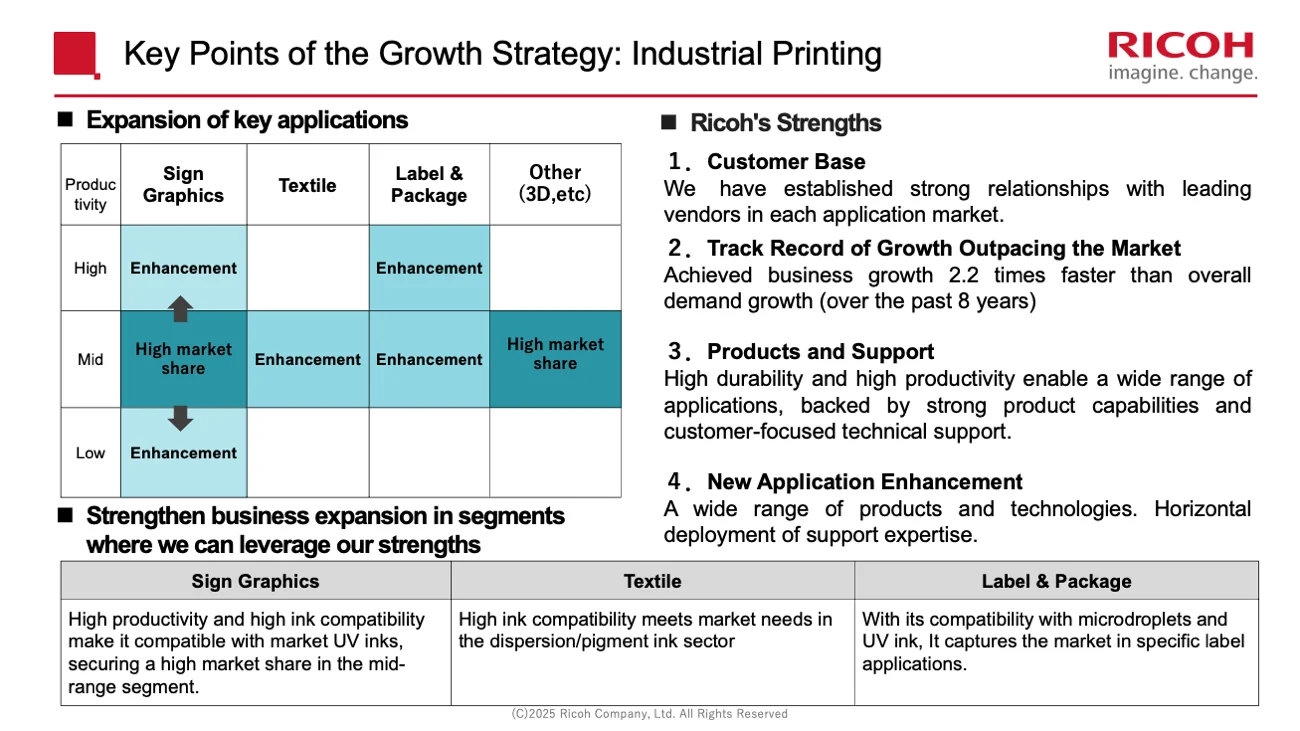
Co-innovation: creating value together with customers
Ricoh’s “Co-innovation” initiative is a collaborative approach to creating new value by understanding customer challenges and working together to solve them. This initiative is driven by four key activities:
Koji Miyao emphasized, “Printing equipment is a long-term investment, often spanning five to ten years. That’s why being a trusted partner over time is essential.” Ricoh aims to be a transformative force in the industry by walking alongside its customers and supporting their evolution.
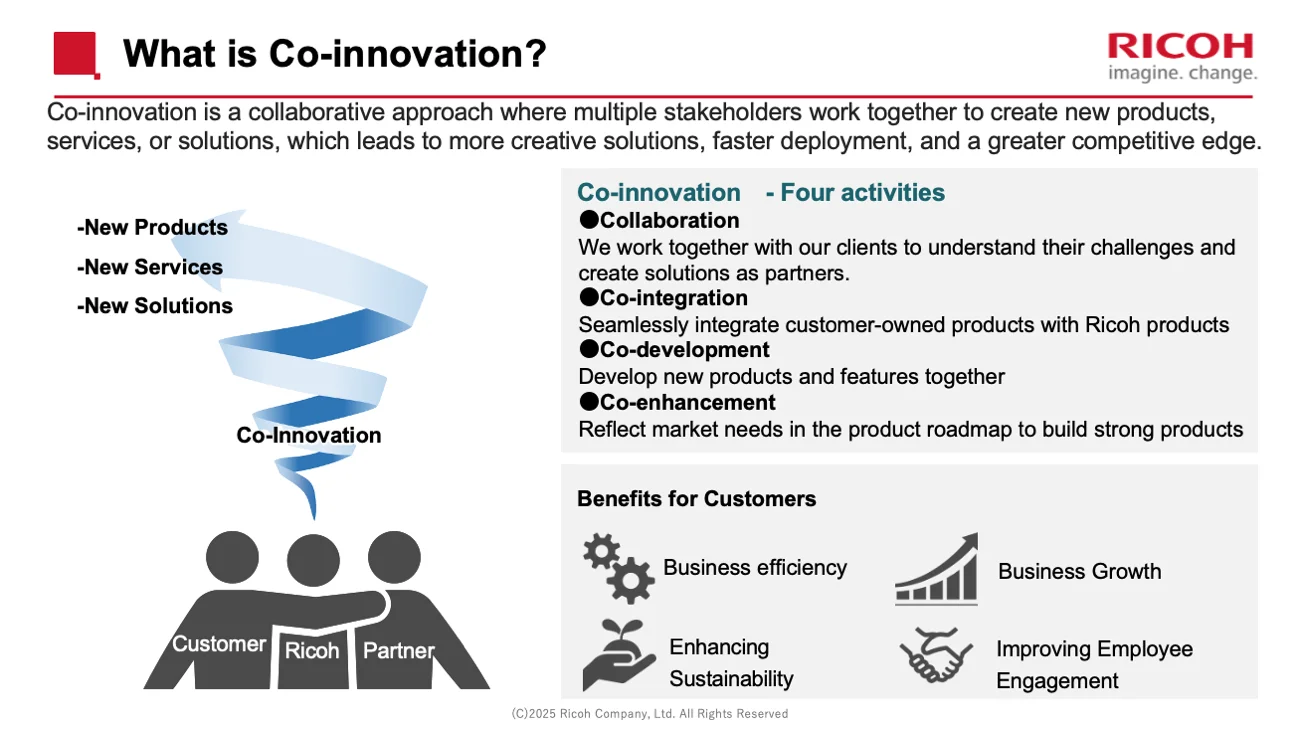
Experiencing real equipment and co-innovation in action
Following Miyao’s presentation, media representatives visited two key facilities within the Ricoh Technology Center: the Ricoh Customer Experience Center (CEC) and the Technical Surprise Wonderland (TSW).
Attendees shared impressions such as, “I now have a clearer understanding of Ricoh’s commercial and industrial printing business,” and “experiencing the actual equipment and co-creation spaces made the presentation much more tangible.”
Ricoh Customer Experience Center (CEC): A place to experience the future of printing
At the CEC, Ricoh showcases its latest technologies and solutions, offering proposals to solve customer challenges such as paper validation. The center also facilitates co-creation with third-party vendors and integration with other manufacturers’ equipment.
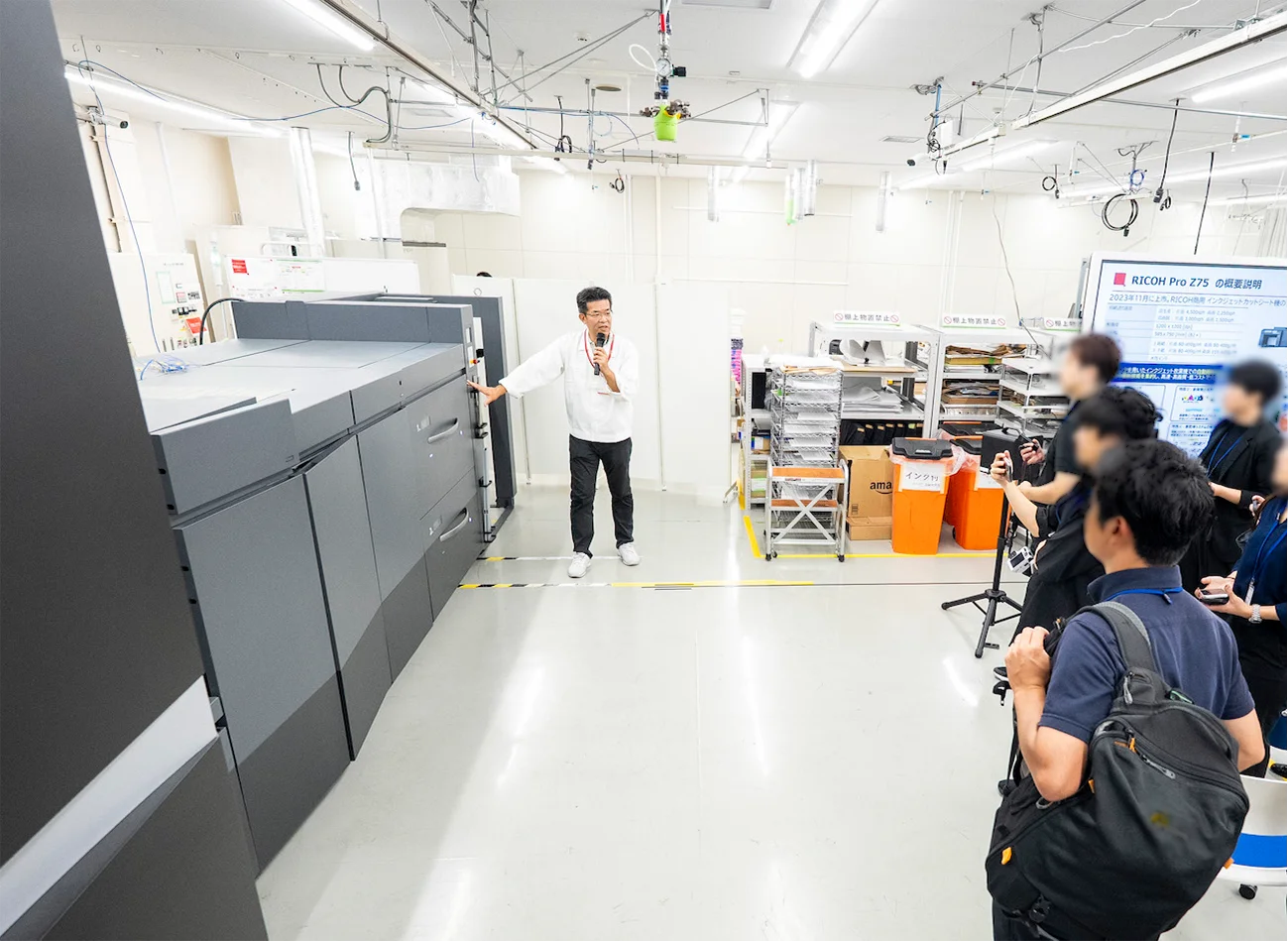
Demonstration of the inkjet printing systems “RICOH Pro Z75” and “RICOH Pro VC80000”
Technical Surprise Wonderland (TSW): A development hub for Innovation and Impact
TSW is a space where Ricoh’s global “Co-innovation” efforts come to life. More than 30 engineers work to bridge the gap between customer needs and product capabilities through customization and tool development. They provide technical support, automation solutions, and application development for customers around the world.
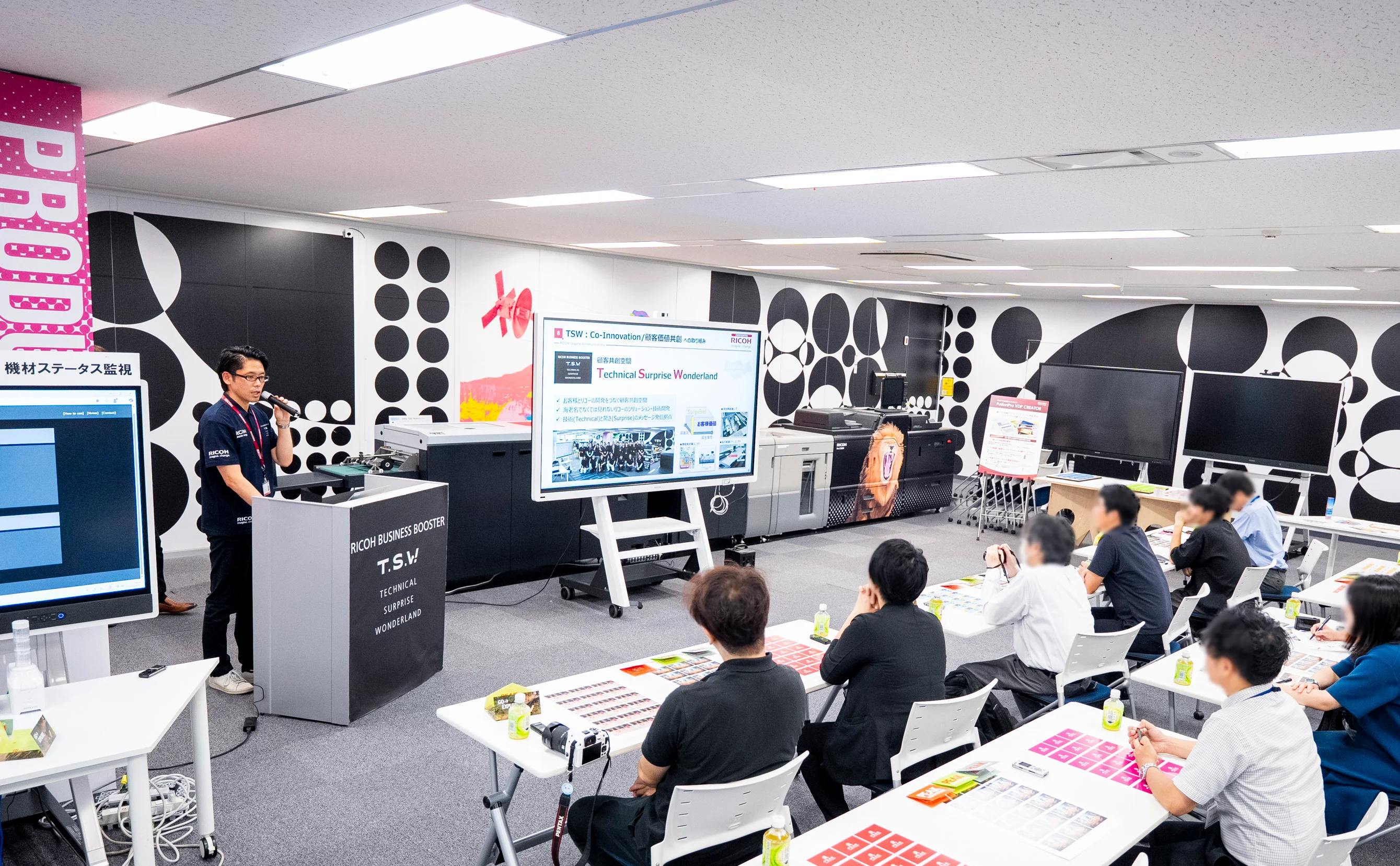
Introducing solutions developed by TSW and examples of Co-innovation with our customers

